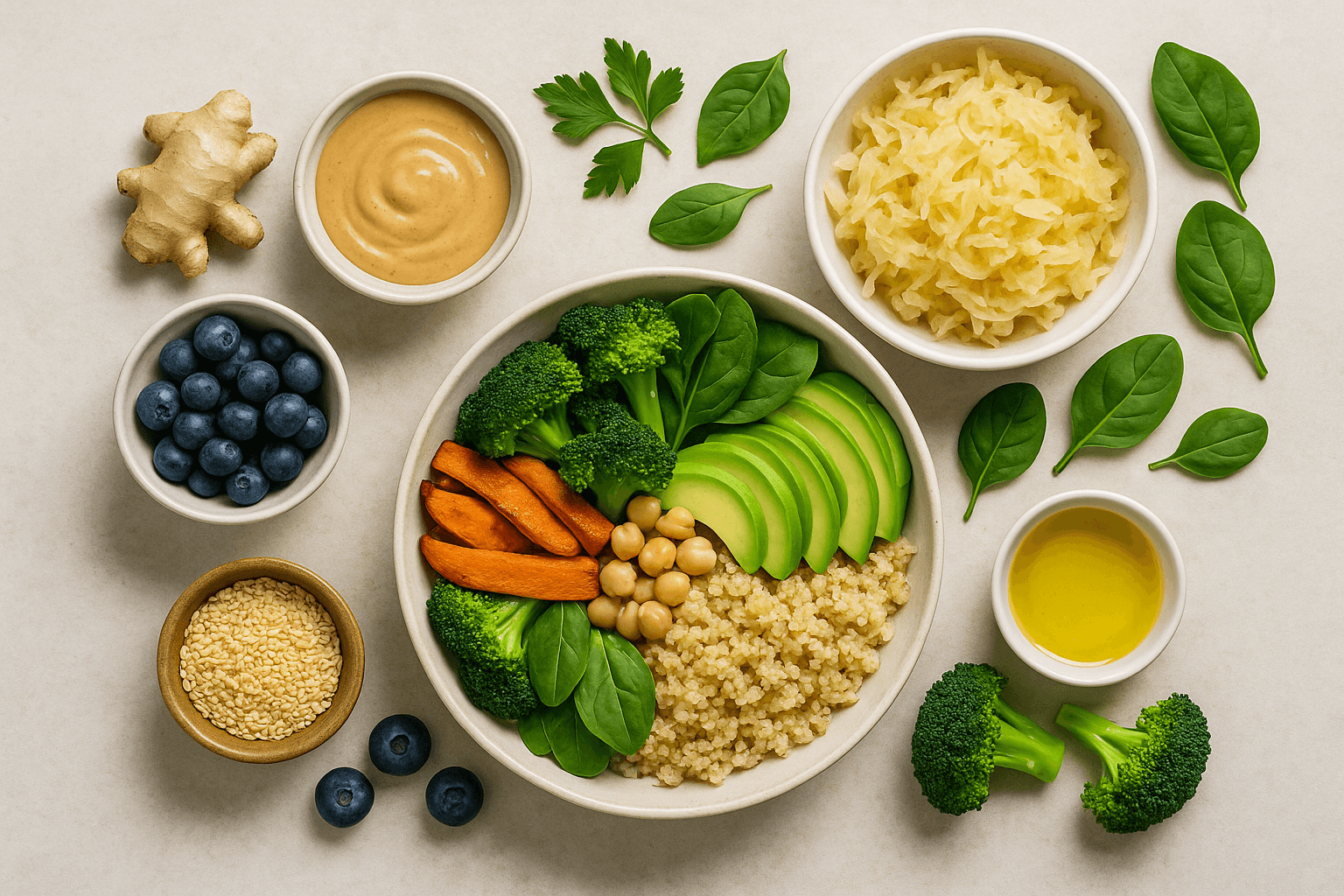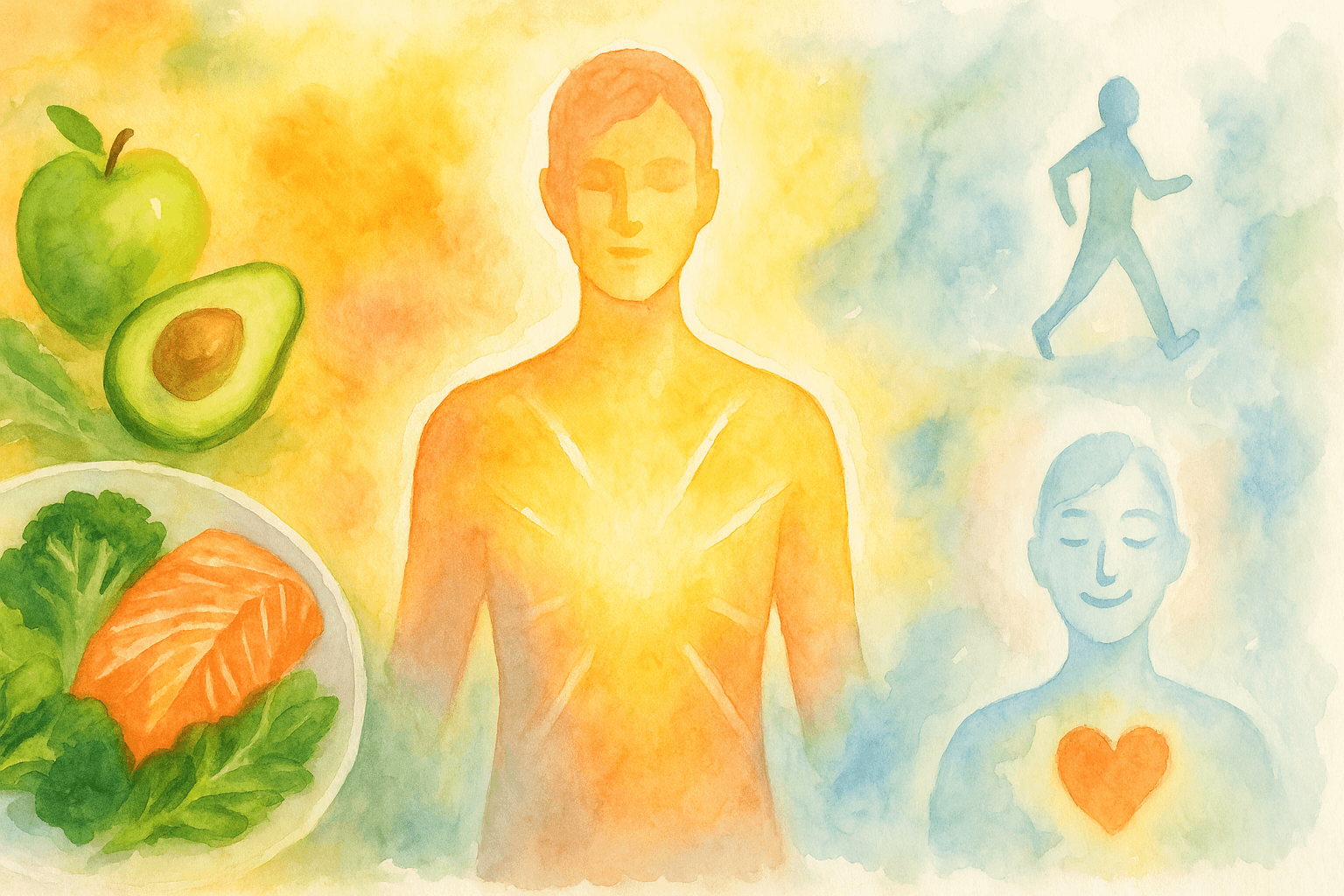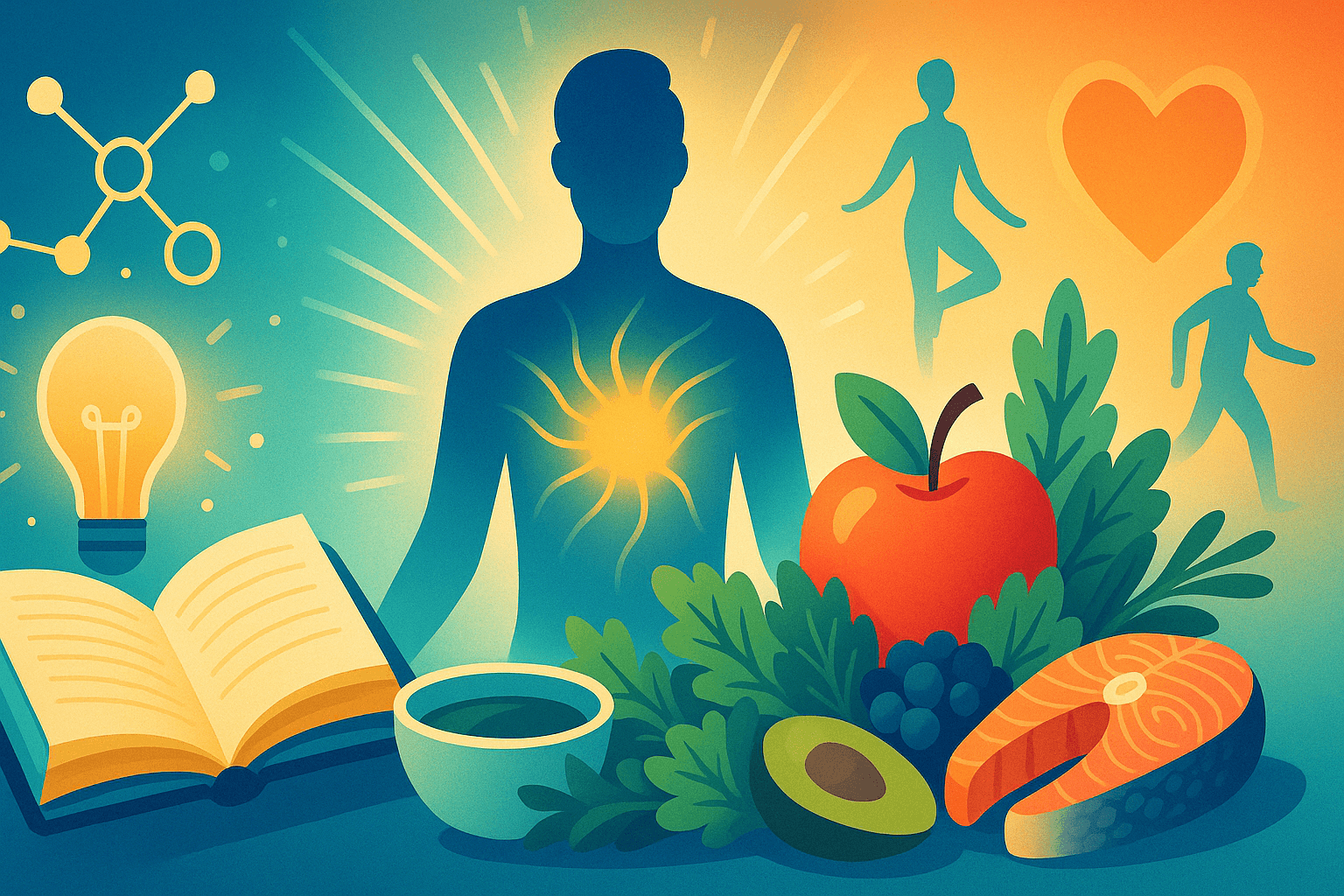DIABETES, DEMYSTIFIED: SCIENCE, MYTHS, AND THE ART OF LIVING WELL EVERY DAY
Published on August 2, 2025

Diabetes is a disease of scientific marvels and fixed ideas, the diagnosis that brings fear but also an unexpected chance for radical transformation and self-care. If you or someone you care for has diabetes, food restrictions, low blood sugars and complications may be your concern. But here’s what science — and thousands of real-life success stories — shows: With the right knowledge, support, and habits your diabetes is not only manageable but you’ll also unlock more energy, confidence (and even joy) than you ever thought possible. As a dietitian who cares deeply about the issue, allow me to help you transform confusion into conviction and each day thereafter another opportunity for thriving health.
What Is Diabetes? The Real Story
At its core, diabetes is about how your body processes the glucose that fuels every one of your cells. But diabetes isn’t just “one thing” — it is a collection of related conditions, each with its own narrative and separate set of challenges (and solutions).
Type 1 diabetes is an autoimmune illness that usually sets in during childhood or adolescence, although it may occur at any age. Here, the body’s own immune system turns on and attacks the pancreas’ insulin-producing cells so that it can no longer make this essential hormone. Managing type 1 takes a lifetime of insulin therapy, but thanks to advances like the insulin pump and continuous glucose monitor people with type 1 are running marathons, traveling around the world, having children (including my two incredible daughters) and following our dreams.
Type 2 diabetes is far more common, usually is slow to develop over the course of years and occurs most frequently in adults (though it’s becoming steadily more prevalent among younger people). In type 2, your cells are insulin resistant and the pancreas can’t keep up. Genetics, diet and physical activity level all contribute to this complex phenomenon. The most hopeful news? For many people — those whom a diagnosis arrives early enough, who have the resources to make sustained lifestyle changes and for reasons that are not entirely understood — it is possible to stabilize or even reverse type 2 diabetes in the short term (the same goes for obesity).
Prediabetes is a warning sign — blood sugar levels are elevated but not yet high enough to be classified as diabetes. Prediabetes is a golden opportunity. With early intervention — such as moving more, eating smarter and reducing stress — many people can avoid the development of type 2 diabetes or delay its onset for years while reclaiming lost health.
Gestational diabetes is a wake-up call to focus on good health long-term since both mom and baby have an increased risk of developing type 2 diabetes later in life.
Uncontrolled diabetes can raise the risk for heart attacks, strokes, kidney disease and problems with nerves as well of vision loss or amputation. But today, when there is abundant support and tools: Most people with diabetes can live long, active, deeply gratifying lives.
Point of Nutrition in Diabetes
The old trope of the “diabetic diet” as a line-up of boring, joyless meals is pretty much passé. Nutrition science has shown in recent years that there’s no single “one-size-fits-all” plan for diabetes. The right way is personal, dynamic, and based on whole foods that are delicious to you.
Carbs: Not The Enemy, But Perhaps the Key
Carbohydrates cause a greater rise in your blood sugar than proteins or fats, but that doesn’t mean you should boot them off the plate. Rather, it’s about quality and timing and balance.
Quality counts: Stick with carbs that break down in the body slowly, like whole grains, fruits and a rainbow of vegetables. In addition, these foods are high in fiber and vitamins and minerals that help to steady blood sugar while feeding your gut microbiome.
Size awareness: Many diameters are for show, but not to serve. Think of the small amount at each meal as being an alternative to large portions served once a day. There are tools that can make it simple, like the “plate method,” or measuring your portions with your hand — no need to count every gram.
Fiber focus: Fiber-ful foods slow the absorption of sugar into your bloodstream, dampen post-meal spikes and keep you feeling full hours later. Fiber is also a gift to your gut bacteria, which help with digestion, immunity and mood.
Smart swaps: Substitute white bread with whole grain, regular pasta for chickpea or lentil pasta and fruit juice with whole fruit. These small daily improvements can make a big difference in the management of blood sugar and overall health.
Build a Balanced Plate
Imagining your meals can help you to reduce the stress of eating with diabetes. The “plate method” is simple to remember and you can eat all your favorite foods.
Half your plate: Load up on non-starchy vegetables — think leafy greens, peppers, broccoli and cauliflower along with low-carb options like mushrooms, zucchini, tomatoes and cucumbers. Not only are these foods naturally low in carbs, they’re packed with lots of other good nutrients and fiber!
One quarter: Select a lean protein, such as grilled chicken or fish, tofu, tempeh, eggs or beans. Protein also slows the absorption of glucose (the sugar which is released from carbohydrates) into your blood, helps you feel fuller longer and contributes to muscle health—crucial for keeping metabolism revved up as you age.
One quarter: Add healthy carbohydrates — whole grains, sweet potatoes, corn and peas are all good options. Look for less processed choices to help control blood sugar levels.
Incorporate healthy fats: Garnish with nuts or seeds, a slice of avocado or drizzle of olive oil. These fats also increase satisfaction and assist brain and heart health as well as in the absorption of certain crucial vitamins.
Timing and Consistency
Your old pal: Consistency with eating patterns.
Don’t skip meals: Skipping long periods of time without eating can cause your blood sugar to drop, and you might crave everything in sight when you do finally sit down for a meal.
Partition your carbs: A bit of carbohydrates with every meal is gentler on blood sugar than a big serving in one shot.
Plan ahead: Getting a clear picture of what you are going to eat will help prevent impulsive decisions, which can upset your balance and glucose metabolism all day long.
Hydration and Drinks
Drink water: Try to get at least 6 – 8 glass a day. Keep hydrated to help your kidneys flush extra sugar out of your body and keep you energized.
Cut back on sugar-sweetened drinks: Regular soda, sweet tea and fancy coffee specials can quickly spike blood sugar levels.
Use caution around diet drinks: They don’t raise blood sugar, but over time may increase your cravings for sweet foods or disrupt the balance of good and bad bacteria in your digestive system.
Alcohol: May cause blood sugar to fall or rise unexpectedly, especially if you take insulin or some meds. Never drink on an empty stomach, and test your sugar levels before you start drinking and again when you finish.
Movement: Nature’s Insulin
Movement is a game-changer for your blood sugar levels — and you don’t have to be an athlete.
Why movement helps: Exercise increases the sensitivity of muscles to insulin, meaning your muscles can more easily take in glucose from the bloodstream and use it for energy. This effect continues for hours after you stop moving, which helps to regulate blood sugar at a healthier level.
How to exercise: Discover activities you like – walking, cycling, dancing or swimming; gardening and playing with your kids. Variety is the spice of life/give your muscles something new to work on.
How much: Try to do at least 150 minutes of moderate activity a week (about 30 minutes, five times per week). Mix in strength training (using weights, resistance bands or your own body weight) 2 to 3 times a week to build muscle and protect your bones.
Check and adjust: If you’re taking insulin or certain diabetes meds, always check with a blood sugar reading before and after your activity to prevent unexpected lows. Have a snack or glucose tablets nearby, just in case.
As an added bonus, movement lifts mood and reduces stress; it helps you sleep better and think more clearly; increases self-confidence. Every step counts!
Top Diabetes Myths—Busted
“You can never eat sweets.”
False! If you want to have the odd dessert, most definitely. The secret is moderation, planning and eating sweet treats as a part of a balanced meal — not on an empty stomach.
“Fruit is off-limits.”
Not true. Fresh fruit delivers necessary nutrients and fiber. Opt for berries, apples and oranges — and watch your portions. Pass juice and dried fruit, which are packed with sugar and calories.
“Carbs are always bad.”
Quality and quantity count much more than blanket avoidance. Whole grains, beans and veggies nourish your body — and can help you keep blood sugar in check.
“Diabetes is your fault.”
This harmful myth breeds guilt and isolation. Diabetes is caused by a combination of genes, environment and lifestyle — nobody should ever be blamed for having done or not done something that may have led to their diagnosis.
What Science Says Works
Mediterranean and DASH diets: These are the most widely studied diet patterns recommended for diabetes. Both are heavy on healthful vegetables, legumes and nuts; whole grains; lean proteins like fish and chicken or feta cheese; vegetarian options such as tofu or tempeh.
Modest weight loss: A reduction of 5–10% (if you have excess fat) can significantly improve blood sugar, blood pressure and cholesterol.
Carb counting and the plate method: All are useful for breaking down meal planning, making healthy eating more routine and less stressful.
Control your stress and sleep: Both high stress and poor sleep elevate blood sugar. Focus on restful sleep and consider stress-reducing strategies, such as mindfulness practices, deep breathing and daily movement.
Living With Diabetes: Small Daily Habits That Make a Difference
Create a support team: Your health-care providers or dietitian and diabetes educator are crucial members of your community, but you can’t overestimate the power friends, family, and peers. Sharing the path makes it less heavy and more fun.
Monitor your progress: Whether you use an app, journal or calendar to record meals, movement and sleep as well as to track blood sugar trends — whenever possible using glucose checks before and one hour after eating a meal — keeping tabs can help you identify what works best for you (and areas that might need revamping).
Honor little wins: Every balanced meal, every walk and good night’s sleep adds up. Acknowledge your progress and maintain the momentum by focusing on what you're doing right.
Embrace curiosity and flexibility: Diabetes care changes as new science, tools and your own life change. Stay open, keep questioning and modify as necessary.
A Dietitian’s Final Word
Diabetes is a journey, and that’s totally navigable with education, compassion and community. You’re a person, not just a diagnosis or blood sugar number. Instead, by concentrating on what you can do and taking small, consistent steps in the face of that fear (because standing still is not an option), one builds for themselves a life filled with health, freedom and resilience. It’s progress, not perfection that counts. Keep wanting more, stay optimistic and let your decisions carry you — meal by meal, day to day — toward whatever that healthiest-and-happiest version of yourself might look like.








